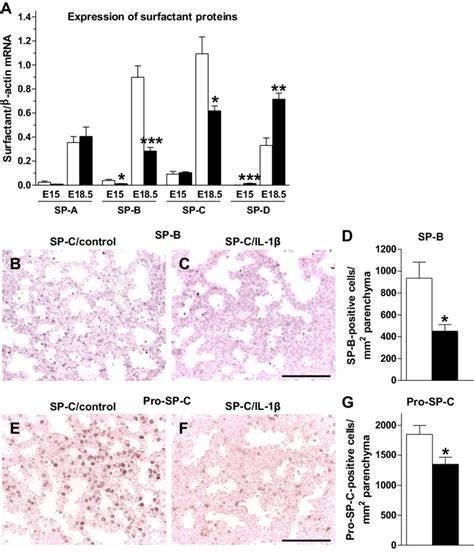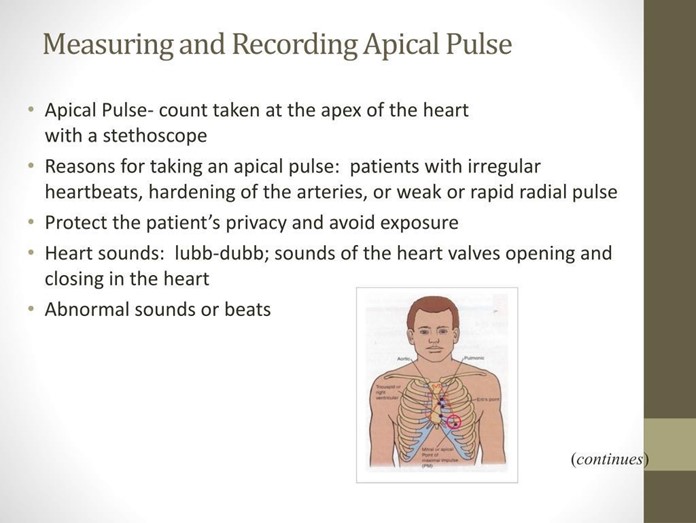Decreased surfactant production in the preterm lung is a problem because surfactant
dilates the bronchioles, decreasing airway resistance.
provides transportation for oxygen to enter the blood supply.
keeps the alveoli open during expiration.
causes increased permeability of the alveoli.
The Correct Answer is C
Choice A) dilates the bronchioles, decreasing airway resistance: This is not the correct function of surfactant.
Surfactant is a substance that reduces the surface tension of the fluid that lines the alveoli, which are the tiny air sacs in the lungs where gas exchange occurs. Surfactant does not affect the diameter of the bronchioles, which are the small airways that branch from the bronchi. Bronchodilation and bronchoconstriction are regulated by the autonomic nervous system and various mediators, such as histamine, epinephrine, and acetylcholine.
Choice B) provides transportation for oxygen to enter the blood supply: This is not the correct function of surfactant. Surfactant does not transport oxygen or any other gas. Oxygen diffuses from the alveoli into the capillaries, where it binds to hemoglobin in the red blood cells. The red blood cells then transport oxygen to the tissues via the blood circulation. Surfactant does not play a role in this process.
Choice C) keeps the alveoli open during expiration: This is the correct function of surfactant. Surfactant prevents the alveoli from collapsing during expiration by lowering the surface tension of the fluid that lines them. This allows for easier breathing and better gas exchange. Without enough surfactant, the alveoli tend to collapse and stick together, causing atelectasis, which is a condition where some or all of a lung collapses. Atelectasis can lead to hypoxia, respiratory distress, and infection.
Choice D) causes increased permeability of the alveoli: This is not the correct function of surfactant. Surfactant does not increase or decrease the permeability of the alveoli, which is the ability of substances to pass through them.
Permeability of the alveoli depends on several factors, such as pressure gradients, solubility, molecular size, and membrane thickness. Increased permeability of the alveoli can occur in conditions such as acute respiratory distress syndrome (ARDS), where fluid leaks into the alveolar space and impairs gas exchange. Surfactant does not cause this condition, but it can be affected by it.

Nursing Test Bank
Naxlex Comprehensive Predictor Exams
Related Questions
Correct Answer is C
Explanation
Choice A) Missed abortion: This is not the correct obstetric complication for methotrexate treatment. A missed abortion is a type of miscarriage in which the fetus has died but the products of conception are still retained in the uterus. Methotrexate is not used for this condition, as it can cause toxicity and bleeding. The usual treatment options for a missed abortion are expectant management, medical induction, or surgical evacuation.
Choice B) Abruptio placentae: This is not the correct obstetric complication for methotrexate treatment. Abruptio placentae is a condition in which the placenta separates from the uterine wall before delivery, causing bleeding and fetal distress. Methotrexate is not used for this condition, as it can worsen the bleeding and harm the fetus. The usual treatment options for abruptio placentae depend on the severity of the condition and the gestational age, but they may include fluid resuscitation, blood transfusion, tocolysis, or emergency delivery.
Choice C) Unruptured ectopic pregnancy: This is the correct obstetric complication for methotrexate treatment. An ectopic pregnancy is a pregnancy that implants outside of the uterine cavity, usually in the fallopian tube. An unruptured ectopic pregnancy is one that has not caused any bleeding or rupture of the tube. Methotrexate is used for this condition, as it can dissolve the pregnancy tissue and prevent further growth and complications.
Methotrexate is given as an injection and works by inhibiting folic acid metabolism, which is essential for cell division.
Methotrexate is only suitable for patients who have stable vital signs, low levels of human chorionic gonadotropin (hCG), and no fetal heartbeat or cardiac activity detected by ultrasound.
Choice D) Complete hydatidiform mole: This is not the correct obstetric complication for methotrexate treatment. A complete hydatidiform mole is a type of gestational trophoblastic disease in which there is an abnormal proliferation of placental tissue without any fetal development. Methotrexate is not used for this condition, as it can cause resistance and recurrence. The usual treatment option for a complete hydatidiform mole is suction curettage, which removes the molar tissue from the uterus.

Correct Answer is B
Explanation
Choice a) 100 to 120 is incorrect because this is too low for a normal newborn's heart rate. The heart rate of a newborn is influenced by factors such as gestational age, activity level, temperature, and health status. A full-term, quiet, alert newborn should have a heart rate between 120 and 160 beats per minute, which reflects their high metabolic rate and oxygen demand. A heart rate below 100 beats per minute may indicate bradycardia, which can be caused by hypoxia, hypothermia, or cardiac problems.
Choice b) 120 to 160 is correct because this is the normal range for a full-term, quiet, alert newborn's heart rate. The apical pulse is the best way to measure the heart rate of a newborn, as it reflects the actual contractions of the heart. The apical pulse can be auscultated at the fourth intercostal space on the left side of the chest, just below the nipple line. The nurse should count the apical pulse for a full minute, as it may vary with the respiratory cycle.
Choice c) 80 to 100 is incorrect because this is also too low for a normal newborn's heart rate. A full-term, quiet, alert newborn should have a heart rate between 120 and 160 beats per minute, which is higher than that of an adult or an older child. A heart rate below 100 beats per minute may indicate bradycardia, which can be caused by hypoxia, hypothermia, or cardiac problems.
Choice d) 150 to 180 is incorrect because this is too high for a normal newborn's heart rate. A full-term, quiet, alert newborn should have a heart rate between 120 and 160 beats per minute, which is lower than that of a preterm or a crying newborn. A heart rate above 160 beats per minute may indicate tachycardia, which can be caused by fever, infection, anemia, or hyperthyroidism.

Whether you are a student looking to ace your exams or a practicing nurse seeking to enhance your expertise , our nursing education contents will empower you with the confidence and competence to make a difference in the lives of patients and become a respected leader in the healthcare field.
Visit Naxlex, invest in your future and unlock endless possibilities with our unparalleled nursing education contents today
Report Wrong Answer on the Current Question
Do you disagree with the answer? If yes, what is your expected answer? Explain.
Kindly be descriptive with the issue you are facing.
